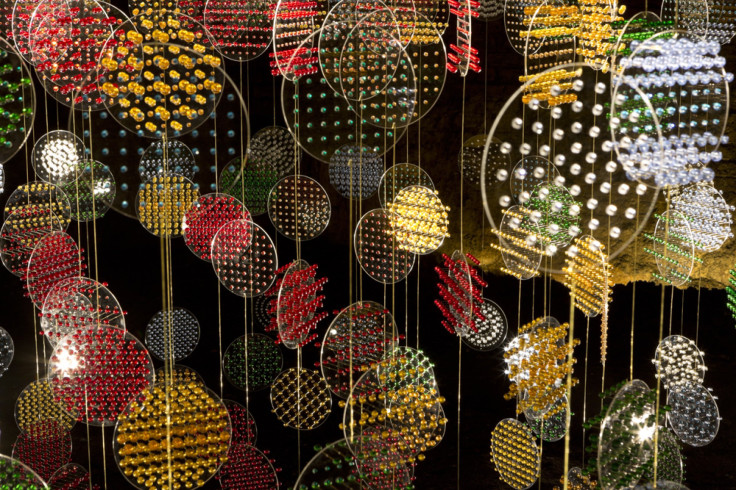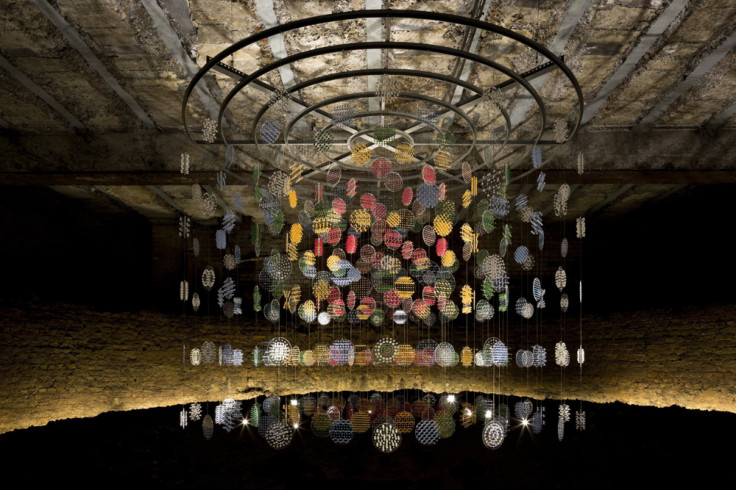Physics And Art Meet In London Ice Well, ‘Covariance’ Art Installation Explores The Beauty Of Particle Detectors
The Institute of Physics has developed a special art installation that looks at the beauty behind particle detectors. “Covariance” is the work of physicist Ben Still and Lyndall Phelps and is located within a Victorian ice well and opens to the public on Aug. 24.

Still is a particle physicist working at Queen Mary, University London and the inspiration behind “Covariance,” according to Phelps, was the physicist’s description of the T2K experiment and the Super-K (Super-Kamioka Neutrino Detection Experiment) particle detector. Covariance is a term often used in statistics and measures how two variables are related.
Super-K is a neutrino observatory, observing one the elementary particles, which is no easy task and Phelps said her conversation with Still revealed the complexity and beauty involved in such a rigorous scientific endeavor. “My preconception that particle physics might be a tad dry and abstract was shattered, replaced by the promise of poetry and rich sensory experiences,” said Phelps in a statement.
“Covariance” is located in an old ice well, giving visitors a chance to go underground and experience a unique world. As part of the installation, Phelps crafted 1.5 kilometers, just under a mile, of brass rods, 36,000 diamantes, 28,000 beads and hundreds of acrylic disks. The amount of time, approximately nine months, and effort, according to Phelps, reflects the complexity of a particle detector as well as the history of physicists.
Still analyzes dot diagrams while historically women were used to read particle detection data. Phelps said, “Huge numbers of women (who were called computers) were employed to do this role. Many of my past works have dealt with the physical labor undertaken by women, especially the repetition of specific tasks. I was keen for the production of the work to encompass this work ethic and to use materials that reflected women’s craft, hence the use of glass beads and diamantes.”

Caitlin Watson, the Institute of Physics’ Head of Public Engagement, said in a statement, “Lyndall's artwork is truly awesome and captures the elegance and allure of physics in a way that will inspire visitors to have their own conversations about physics.” Still also praised Phelps’ work describing it as though a particle detector had come to life, saying in a statement, “The surroundings, regular structure, and color palette reflect the role of particle detectors and the data they record in the most visually grasping way.”
Visitors to “Covariance” go on a guided tour, traveling down to the installation via two sets of ladders. As visitors descend to the installation, Phelps says the experience will change, from the visuals to the sounds, creating an immersive experience.
© Copyright IBTimes 2024. All rights reserved.






















